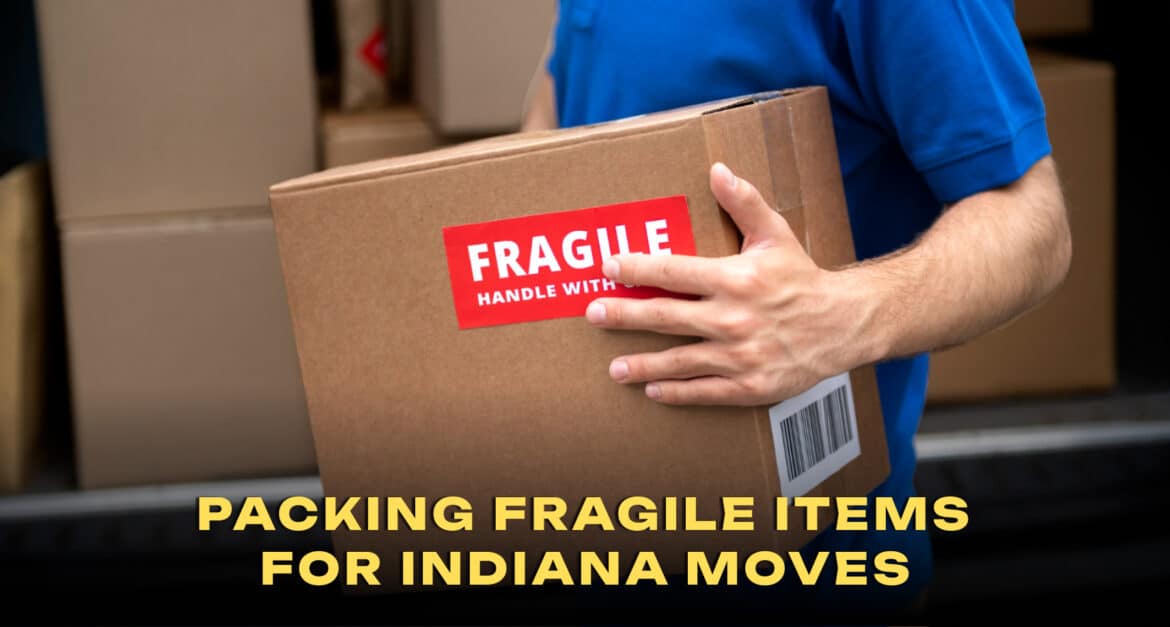
Packing fragile items requires proper planning, quality packing materials, and careful handling to avoid breakage or loss during a move. Indiana has a variety of weather patterns, including humidity, temperature changes, and winter road conditions, which means customers need to take extra steps to ensure that delicate belongings remain secure in transit. Many customers do not realize that the majority of damage during a move occurs not during actual driving, but during loading and unloading. This is why proper packing techniques make a major difference in safety and reliability. Safeway Moving helps customers in Indiana pack efficiently, and the company also offers professional packing services for customers who do not have the time or professional grade materials to do all of it on their own.
Additionally, packing fragile items involves more than placing objects in bubble wrap. Customers must understand weight distribution, layering, cushioning, and even box placement in the truck. Indiana road surfaces, especially on long distance routes or rural highways, can cause vehicles to shake more than expected. Therefore, packing strategy must include vibration preparation. Choosing the right materials, using structured packing sequences, and labeling boxes properly ensures a safer and smoother move.
Choosing the Right Packing Materials Matters Significantly
Packing fragile items begins with selecting high quality packing materials. Customers need to avoid using old, worn out boxes because weak cardboard does not hold weight well and can collapse during transit. Instead, customers should invest in durable, double wall boxes for glasses, dishes, electronics, and other breakable goods. Safeway Moving supplies professional grade materials for customers who either purchase packing materials or hire the company to handle packing completely. Furthermore, bubble wrap, packing paper, foam inserts, and stretch wrap should be used multiple times during packing to create layers of protection.
Furthermore, weather differences in Indiana reinforce the need for proper material selection. For example, extreme cold can make cheap plastic brittle, while heat and humidity can weaken cardboard. Therefore, choosing the right materials is not just a preference, it is a protective measure that addresses risk from environmental conditions. Taking time to select durable materials always leads to better protection.
Key material considerations include:
- Using new and thick boxes for fragile products so customers reduce the risk of collapse or breakage during loading, unloading, or long distance truck vibration.
- Selecting extra cushioning like bubble wrap, packing paper, or foam to create shock absorbing layers that protect against both movement and temperature fluctuations during an Indiana move.
Using Proper Packing Methods Prevents Damage
Customers also need to follow correct packing procedures when packing fragile items. Instead of placing items loosely inside boxes, customers should wrap each item individually and place cushioning between items. This prevents collision and friction damage. Items like plates and bowls should be packed vertically, not horizontally, because vertical orientation distributes impact more evenly. Safeway Moving uses these methods when packing for customers because the company understands that small mistakes can cause large breakage problems.
Furthermore, weight distribution plays a major role. Lighter and delicate items should be placed on top of heavier items. Boxes should never be overfilled because overfilled boxes burst open more easily. Packing should be planned so that each box is firm, filled to the edges with cushioning, but still closed comfortably without force. This ensures structural integrity while still protecting items.
Proper packing methods include:
- Wrapping each item individually with cushioning to prevent contact and reduce risk of damage from vibration, shaking, or shifting inside the box during transit.
- Stacking items carefully with lighter fragile goods on top so the weight does not crush delicate pieces and customers maintain balanced and secure box construction.
Safeway Moving ensures that no matter where you move, you’ll have professional guidance and reliable services.
Loading and Labeling Improve Handling Safety
After fragile items are packed properly, the next step is safe loading. Customers should place fragile boxes on top of heavier boxes and avoid floor level placement because fragile items are safer when placed above heavy furniture or boxes that will not shift. Using straps inside the truck helps prevent box movement. Safeway Moving trains movers on professional loading sequencing to help protect fragile goods from accidental movement. When customers hire professional movers, these steps are carried out with precision to minimize risk.
Additionally, labeling boxes plays a critical role in communication and handling safety. Boxes containing fragile items should always be labeled on multiple sides with large clear writing. This ensures that movers know which boxes require light handling and careful positioning. Labeling also speeds up unloading and makes unpacking more efficient because customers can directly place fragile boxes into safe zones like countertops or padding areas before opening them.
Loading and labeling considerations include:
- Placing fragile boxes above heavier items to prevent crushing and using straps inside the truck to keep boxes from sliding during transit and while driving along Indiana roads.
- Labeling every box with clear fragile markings to improve communication, handling precision, and proper placement during unloading at the destination.
Final Thoughts on Packing Fragile Items Safely
Packing fragile items is not something to rush or take lightly. Using the right materials, correct packing techniques, and safe truck loading strategies drastically reduces damage risk. Indiana moves require proper preparation because weather conditions and road vibration factors can increase risk if fragile belongings are not secured professionally. Safeway Moving offers expert packing services for customers who want extra protection or want to avoid the time investment required for detailed packing.
Customers who want the safest possible relocation experience should focus on material quality, proper wrapping structure, and fully secure labeling. When these steps are followed correctly, fragile goods arrive safely and the moving process becomes less stressful.
Fragile items should always be packed separately because mixing them with heavier items increases risk of pressure damage or impact related breakage.
Bubble wrap, thick cardboard, foam inserts, and packing paper offer the strongest protection because they absorb vibration and cushion against shocks.
Yes, professional packing by companies like Safeway Moving often reduces risk because experienced packers use structured and proven packing procedures.
Labeling is extremely important because it helps movers identify fragile goods quickly and ensures accurate placement and safe handling during transit and unloading.










